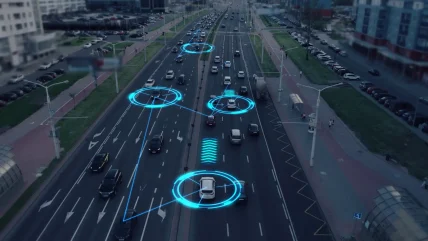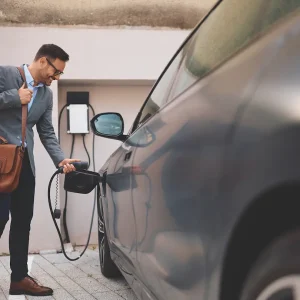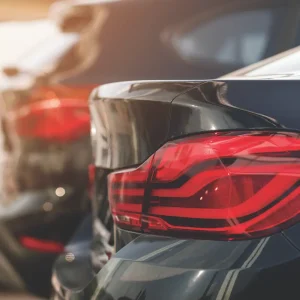
You do not have to look far to see autonomous vehicles (AVs) at work. Trucks pilot themselves along the roads around Nissan’s Sunderland factory, unmanned forklifts buzz through more than a few of the world’s warehouses, and driverless buses wind their way through Oxford.
The rules are comparatively loose for off-highway AVs, but those that creep onto the road must be manned by a person and will be there purely on a trial basis. There is even government guidance on how to do it – a 2019 document called Code of Practice: automated vehicle trialling.
That is due to change in 2026, when AVs are expected to hit the highway without a human at the wheel. The Automated Vehicles Act passed in May and has laid the legal groundwork to permit the first driverless vehicles on public roads.
It is impossible to ignore the commercial motivation behind the move, as the government said the self-driving vehicle sector generated £475m of investment and created 1,500 new jobs between 2018 and 2022. It estimates the home-grown industry will be worth up to £42bn and create 38,000 jobs by 2035.
Crucially, though, the AV Act addresses the thorny issue of responsibility in an accident. “While their vehicle is in self-driving mode, they [drivers] will not be held responsible for how the vehicle drives,” says the government.
“The Law Commission introduced this whole new set of vocabulary, which put daylight between driver support technologies like lane assist and adaptive cruise control, and true driverless vehicles,” explains Jonathan Butler, partner and head of automotive at law firm Geldards and a board member of the Vehicle Remarketing Association.
“It was aimed, really, at creating a paradigm shift, in moving responsibility for road safety from drivers of automated vehicles to manufacturers or software providers.”
Legal hat trick
A big part of that that is a trio of new terms to legally define an AV’s status and exactly what it is doing. The first is Authorised Self-Driving Entity (ASDE), which refers to the manufacturer or the technology company putting forward an AV for authorisation.
The second – and this is where fleets and drivers should start paying attention – is User In Charge (UIC). This means there is a qualified and insured driver at the wheel, who can take control of the vehicle if they need to, but they are neither actively driving nor are they considered responsible.
“You’re kind of less than a driver, but you’re more than a passenger” says Butler, “you’re just able to seize control if you’re required to do so.”
The third and final category is much clearer cut: No User In Charge (NUIC) means the vehicle is doing everything with no human input whatsoever.
The vehicles themselves must be type-approved for use as AVs to receive ASDE status and to be allowed on the road. The specifics have yet to be nailed down, but that will involve a form of driving test, so the vehicle can demonstrate that it can travel autonomously and either match or better conventional human driving standards.
“Whoever supplies that vehicle is going to have to have something in place that makes sure it passes this test and maintains these standards,” adds Butler, “those authorisations can be suspended or varied or revoked, if the Secretary of State – or whichever authority it’s going to be – suspects that grounds for withdrawal have been met… If it’s jumped a red light or just didn’t stop in time, someone might want to recall that vehicle and submit it to a further test.”
Cost consideration
While the government’s press release announcing the AV Act says drivers will not be responsible for AVs in self-driving mode, the same statement says that insurance companies, software developers and vehicle manufacturers “can assume this responsibility”. The expectation is that they will, otherwise AVs would drown at birth, but that responsibility will almost certainly add cost. While AVs are designed to be more cautious than your average human driver, they are not immune from accidents, and the industry will be acutely aware of General Motors’ subsidiary Cruise and its Origin AV, which had no steering wheel or pedals. Production was shelved in 2024, following an accident in San Francisco in October 2023, when a pedestrian, who was initially struck by another vehicle and then became entangled with a Cruise, was reportedly dragged around 20 feet. GM is continuing AV development, but instead with the next-generation Chevrolet Bolt.
The grey area for UK drivers in responsibility terms is if the vehicle tells them they need to take back control when faced with a situation it cannot handle independently. AVs suit highly predictable, regular routes and motorway-style open roads with clear, unobstructed markings, but they have a harder time with built-up areas. While the tech continues to march on, an advanced AV at home in the former environment may need to dial in the driver in the latter. Butler refers to this as a transition demand.
“The ultimate responsibility will be with the ASDE, but one exception to that will be if there’s been a transition demand. If a warning pops up on the dashboard and says you must now take hold of the wheel, then you have to question how alert that person will be to react to that demand. When you’re a passenger, your alert reaction time is much slower than the person who’s driving.
“You’re suddenly then becoming criminally responsible under the normal road traffic legislation, because you’ve now taken the wheel – or you didn’t take the wheel when you should have done. There’s a risk here that people are going to think, ‘actually, I’m better off just driving’.”
Progress expected
There is momentum behind the Automated Vehicle Act and the legislation is expected to kick in this year, before AVs are permitted on the roads. Secondary legislation is also said to be in the works to support the legal framework and the overall regulatory package is regarded as sophisticated and ahead of the curve.
As for the first highway applications of AVs in fleet capacities, they are expected to follow the regular, predictable format established by manned trials.
“First, it will be industrial – logistics and supply chain companies – where people are moving materials, goods and pallets. They’ll be extended from yard movements and ports,” says Richard Jinks, COO at automated vehicle software specialist Oxa, which has conducted extensive trials in the UK and overseas, including the aforementioned Oxford bus routes.
He explains how they work in practice: “If you think of a bus, it’s going from A to B to C to D and back again. From an autonomy point of view, you can qualify that route, because it’s the same every day.”
Few believe drivers will be perusing choice lists for cars without steering wheels in 2026, or any time in the foreseeable future, but Jinks points to airports and hazardous sites as some of the more likely areas in which AVs could be put to work in both on and off-highway capacities.
“Where there’s oversized baggage, there are 3.5-tonne vans. Lots of industrial sites use vans, too, and the companies don’t really want humans in dangerous places. Those could easily be use cases that could be replicated with autonomy on fixed routes.
“In 2026, you won’t be seeing drivers leave their cars and have autonomous vehicles as private vehicles, but you will start seeing certain services on a fixed route, operated by autonomous vehicles for shared passenger transportation and the movement of goods. Parking your car at the airport car park and the vehicle taking you to the terminal could be autonomous.”
Insurance question
The mass-market insurance situation will be challenging to say the least. It has always been the case that insurers do not like unchartered territory, and you need only look at the cost of cover for electric vehicles – which are substantially more tried and tested than AVs and anecdotally cost around a third more than ICEs to insure, because they are ‘new’ – and general policies for AVs operating outside niche and heavily specialised trials seem a long way off. Butler agrees that cover will be tricky, but thinks that, operated correctly, AVs could be beneficial for fleets, although there is a question mark for manufacturers.
“If the standard of safety is higher than or equivalent to a competent driver, there should be a reduction in accidents. If there is a reduction in accidents, then… there should be a reduction in insurance premiums. You will get reduced fuel consumption. Obviously, if they’re electric, then that’s different, but if you’ve got lower fuel consumption, you’ve got lower emissions, so it’s good from an environmental perspective.
“AVs will travel at the optimum speed, they’ll apply optimum levels of braking, they’ll choose the fastest routes. They’ll therefore reduce wear and tear on parts and thus maximise efficiency, so those vehicles should last longer.
“The flip side of that, of course, is that the longer the vehicles last, the less demand for them there’ll be. You might find the fleet providers not having the same turnover of vehicles from customers, because they don’t need to replace them.”





